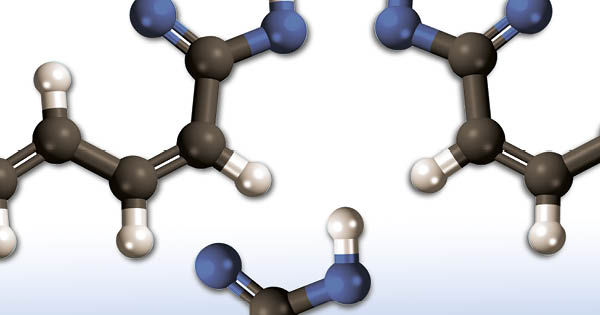Infection is the single most important contributory factor in delayed wound healing. All wounds contain micro-organisms (mainly bacteria), but not all wounds will become infected. The potential for bacteria to delay healing is influenced by the ability of the patient’s immune system to combat the bacteria as well as the number and type of bacteria present (WUWHS, 2008). Prevention of wound infection should be a primary management objective for all clinicians, while early diagnosis can reduce the risk of complications and treatment costs (White, 2009).
Diagnosing infection is primarily a clinical skill. However, not all wounds present with the classical signs of redness, heat and swelling and sometimes more subtle signs may indicate localised infection or persistent inflammation (e.g. caused by biofilm) (Phillips et al, 2011).
Effectively managing and treating wound infection can also be challenging, clinicians having a wide range of products and pharmaceutical interventions to choose from. However, indiscriminate use of antibiotics has led to the rising prevalence of resistant organisms, with the potential to jeopardise patient outcomes (EWMA, 2013). This has led to the need to restrict their use to essential indications and a focus on local wound management using topical antimicrobials as a first-line treatment to manage wound bioburden, particularly in chronic wounds.
Topical antimicrobials should be used only when signs and symptoms suggest wound bioburden is interfering with healing (Figure 1). The decision about which topical antimicrobial to select should be made on the basis of knowledge, experience and evidence (Kramer et al, 2010).
What is PHMB?
Polyhexamethylene biguanide (PHMB) is a broad-spectrum antimicrobial substance that has been used for 60 years in a wide range of medical and non-medical applications (Davies et al, 1954; Eberlein and Assadian, 2010). It has been used safely in wound care since the early 1990s; it is well tolerated and has a low-risk profile (Kaehn, 2010).
PHMB works by attaching to the surface molecules of the microbial cell and disrupting its membrane and metabolism. This causes a loss of cell function and, ultimately, destruction of the microbial cell (Kaehn, 2010).
Studies have shown that PHMB is effective against a broad spectrum of micro-organisms, including both Gram-positive and Gram-negative bacteria (Gilbert and Moore, 2005), and selected fungi (Yanai et al, 2011) as well as resistant organisms such as meticillin-resistant Staphylococcus aureus (MRSA) (Kirker et al, 2009). PHMB has also been shown in-vitro to be effective against bacteria in biofilms (Kaehn, 2010; Hüber et al, 2010). Because of its multi-modal action, acquired resistance to PHMB is unlikely (Gilbert and McBain, 2001).
PHMB is increasingly used in wound care because of its good biocompatibility. It is available, for example, as a cleansing solution (Prontosan®, B Braun) and as impregnated dressings such as CelluDress-PHMB (Medicareplus International — also known as VULCOSAN®, Hawest Research AG). In concentrations up to 0.3%, PHMB has been described as ‘practically non-toxic’ (Hüber and Kramer, 2010), with good cell and tissue tolerability and a very low risk of sensitisation (Eberlein and Assadian, 2010).
Clinical evidence for PHMB
The use of PHMB is well-established in wound care. It has been demonstrated to have positive effects on wound healing and may reduce wound pain, odour and slough, providing an alternative antimicrobial agent to silver, honey or iodine (Butcher, 2012; Vowden et al, 2011). Some of the key clinical papers are highlighted in Table 1.
The results of in-vivo and in-vitro studies of PHMB led Dissemond et al (2010) to recommend that PHMB be used as the primary topical antimicrobial for the treatment of critically colonised or locally infected acute and chronic wounds.
Rationale for treatment
The primary objective is to eliminate the clinical signs of infection (e.g. reduce pain, exudate and odour and encourage granulation tissue formation) or to reduce the risk of infection developing (Dissemond et al, 2011). In general, the duration of topical antimicrobial treatment is 7–14 days at which time there should be a review of the wound and antimicrobial treatment stopped if the therapy is successful (Wounds UK BPS, 2013). The continuation of antimicrobial treatment is only justified on the basis of a full risk/benefit assessment (i.e. its ability to kill bacteria versus risk of damaging the wound bed). For preparations containing PHMB, which has been shown to have low cytotoxity (Roth et al, 2010), consideration may be given to longer periods of use, providing regular review is performed to ensure the ongoing suitability of the product (Eberlein and Assadian, 2010).
CelluDress-PHMB
CelluDress-PHMB is a sterile moist wound dressing impregnated with a special PHMB Antimicrobial Complex. The dressing has a three-layer structure. The two outer layers are non-adherent to minimise adherence to the wound and improve patient comfort. The middle biocellulose layer is designed to function as a reservoir for the antimicrobial solution as well as an absorption layer for wound pathogens. The dressing protects against the development of wound infection by absorbing and binding to the negatively-charged micro-organisms, decreasing the bacterial load in the dressing and preventing bacterial growth in the wound (Edwards-Jones et al, 2013).
Indications for use
CelluDress-PHMB is indicated for acute and chronic wounds at risk of infection, with low to moderate exudate. It can be used at different stages of healing to promote granulation, while providing antimicrobial protection and effective exudate management. It can also be used under compression. Examples or wound types that can be considered for treatment include:
- First and second degree burns
- Post-surgical wounds
- Traumatic wounds
- Chronic leg ulcers (venous, arterial or mixed)
- Diabetic foot ulcers
- Pressure ulcers.
CelluDress-PHMB should only be used on skin wounds or mucosal membranes and should not be used where bone tissue is exposed, where there is cartilage damage or there is known hypersensitivity to one of the ingredients. It may be used on babies or pregnant women in consultation with the lead clinician only.
Top tips for practitioners
- The dressing can be cut and shaped to fit the wound.
- For deeper wounds, the dressing can be cut into strips and shaped to fit the wound.
- The dressing should not be allowed to dry out. For low exuding wounds, apply an appropriate secondary dressing to minimise the risk of wound dehydration.
- For wounds with moderate to high levels of exudate, use a non-adherent absorbent secondary dressing.
- Affix the dressing with adhesive tape or retention bandage.
- Daily changing is recommended for infected wounds. For all other wounds, dressings should not be left on the wound for longer than 3 days.
- The safety and excellent tissue compatibility of PHMB allows application over a long period of time. Review suitability at each dressing change.
- When there is suspicion of deep or spreading infection, start treatment with systemic antibiotics.
Using CelluDress-PHMB in practice
In 2013, Hagelstein and Ivins reported on the use of CelluDress-PHMB in 5 patients with recalcitrant wounds at high risk of infection or reinfection. The nurses rated the dressing performance as good, it was easy to apply and remove, and did not cause discomfort on removal or during wear (Hagelstein and Ivins, 2013). Using the dressing led to a clear improvement in patient comfort and quality of life. The following case reports collected from the caseload of a tissue viability nurse working in Germany, look at the use CelluDress-PHMB in patients with various wound aetiologies.




